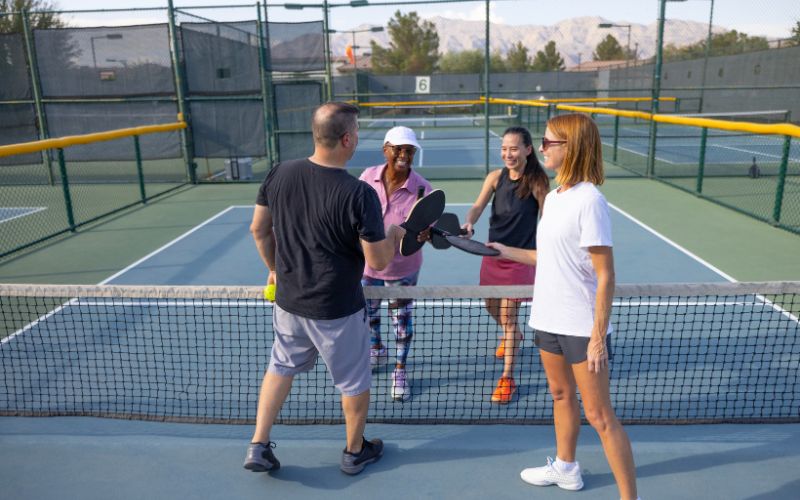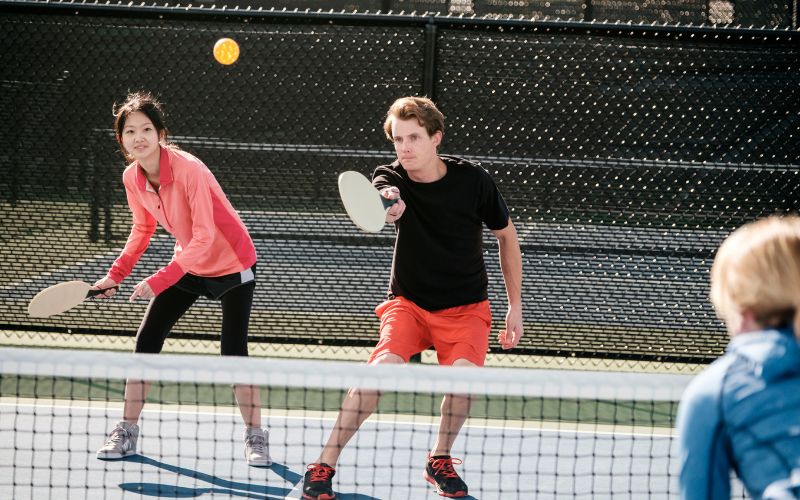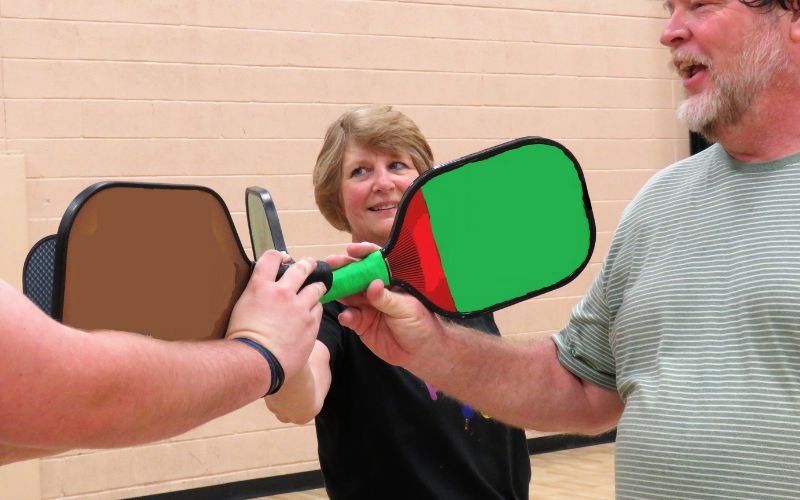Pickleball has surged in popularity, and with more people playing, the number of tournaments has also increased. Whether you’re a novice player looking to enter your first pickleball tournament or a seasoned pro aiming for the top, understanding pickleball brackets is crucial. This guide will take you through everything you need to know about pickleball brackets, from the basics to advanced strategies.
What Are Pickleball Brackets?
Pickleball brackets are the systems used to organize players or teams in pickleball tournaments. They determine who plays whom, and when, and how winners and losers progress.
Types of Brackets
Each type of bracket system has its own set of rules and methods for determining winners and advancing players or teams through the competition.
Single Elimination
In a Single Elimination bracket, the simplest and most straightforward tournament format, players or teams are matched-up in a bracket structure – the winner of each match advances, and the loser is immediately eliminated from the tournament. This continues until only one player or team remains undefeated, who is then declared the tournament champion.
Key Characteristics:
- Simplicity: Easy to organize and understand.
- Duration: Tends to be shorter since players are eliminated after their first loss.
- Pressure: High stakes for every match since any loss results in elimination.
Strategies for Players:
- Prepare intensively for each match since there is no room for error.
- Scouting opponents beforehand can be crucial because every match could be your last.
Double Elimination
Double Elimination brackets offer a second chance for players or teams. After losing a match, players move into a “losers’ bracket” where they have the opportunity to play their way back to the finals. The winner of the losers’ bracket can challenge the winner of the winners’ bracket, potentially resetting the bracket if they win, leading to a final, decisive match.
Key Characteristics:
- Second Chance: Players can lose once and still have a shot at the title.
- Longer Tournaments: The presence of a losers’ bracket extends the length of the tournament.
- Comebacks: Allows for dramatic comebacks and strategic adjustments after a loss.
Strategies for Players:
- Mental resilience is key, as the path to victory can be longer and more challenging.
- Players must be prepared to possibly play more matches than in a single elimination format.
Round Robin
In a Round Robin bracket, each player or team plays against every other participant an equal number of times. The overall winner is typically determined by the best record at the end of the round-robin play.
Key Characteristics:
- Fairness: Every player or team has the chance to play all others.
- Comprehensive: More games mean a better assessment of each player’s or team’s skill level.
- No Immediate Elimination: Players get to play multiple games regardless of wins or losses.
Strategies for Players:
- Consistency is crucial across multiple matches.
- Managing energy and stamina is important due to the number of games played.
Pool Play
Pool Play is similar to round robin but on a smaller scale. Players or teams are divided into pools, and they play a round-robin within their pool. The top players or teams from each pool then advance to a final bracket, which is often single or double elimination.
Key Characteristics:
- Group Stage: Initial play determines who advances to the knockout stage.
- Balanced Play: Helps to reduce the impact of one bad game.
- Seeding: Often used to determine placement in the final bracket.
Strategies for Players:
- Early games can be used to gauge the competition and adjust strategies.
- It’s important to secure a top position within the pool to advance with a favorable seed.
In all these formats, tournament directors must consider the number of courts available, the number of participants, and the overall time available for the tournament when deciding which bracket system to use. Players should always check the tournament format in advance to prepare accordingly, as each type of bracket can require a different strategic approach.
How to Read Pickleball Brackets
Understanding how to read brackets is essential for both players and tournament directors. Brackets are typically displayed in a tree diagram, with lines connecting opponents and indicating the path to the finals.
Key Elements of a Bracket
- Seeding: Based on skill level or ranking.
- Byes: Automatic advancement when there’s an odd number of participants.
- Match Details: Time and court assignments.
Organizing a Tournament
The size of the tournament and the number of available courts will often dictate the type of bracket used. Larger tournaments with many participants may use a combination of pool play and single elimination to manage time and space efficiently.
Many tournament directors now use software to manage brackets. These tools can handle registration, seeding, and court assignments, making the process less time consuming.
Playing in a Tournament
Preparation
Before the tournament, players should register and verify their details. It’s also helpful to understand the bracket format and prepare mentally for the type of play.
During the Tournament
Stay aware of the schedule and be ready for your matches. Tournament days can be long, so bring snacks, water, and extra equipment.
Advanced Bracket Strategies
Seeding and Positioning
Understanding how seeding affects matchups can give players an advantage. Higher-seeded players generally have a more favorable path through the bracket.
Analyzing Opponents
Use any available data to learn about your opponents’ strengths and weaknesses. This can be from previous matches or tournament results.
Mental Game
The pressure of tournament play can affect performance. Develop a routine to stay focused and calm.
Navigating the world of pickleball brackets is akin to mastering a strategic game within the game. Whether you’re deciphering the single-elimination urgency, the resilience-testing double elimination, the endurance challenge of round robin, or the tactical pool play, each bracket type offers unique challenges and opportunities. As a player, your journey from novice to pro isn’t just about honing your physical skills on the court; it’s also about understanding the intricacies of tournament play.
For tournament directors, the choice of bracket is a balancing act between fairness, time management, and player experience. The right software can streamline this process, allowing for a focus on creating an enjoyable and competitive environment.
Players, on the other hand, must approach each tournament with a tailored strategy, adapting to the format to maximize their chances of victory. Preparation, adaptability, and mental fortitude are the hallmarks of a player ready to conquer any bracket they face.
In the end, pickleball brackets are more than just a method of organizing play; they’re a framework within which the drama of competition unfolds, friendships are forged, and champions are made. Whether you’re stepping onto the court for your first tournament or your hundredth, the brackets hold the narrative of your pickleball journey. Embrace the challenge, enjoy the camaraderie, and, above all, let the love of the game guide you through the brackets from novice to pro.
Frequently Asked Questions
What is the best strategy for a round robin tournament?
In a round robin, focus on winning as many games as possible and maintaining a high point differential. This will help in case of tiebreakers.
How do you handle the pressure of single elimination?
Stay present in each point and manage your emotions. One game at a time is the best approach.
Can you move up in skill level during the tournament season?
Yes, if your rating improves significantly, you might be eligible to play at a higher skill level in subsequent tournaments.







